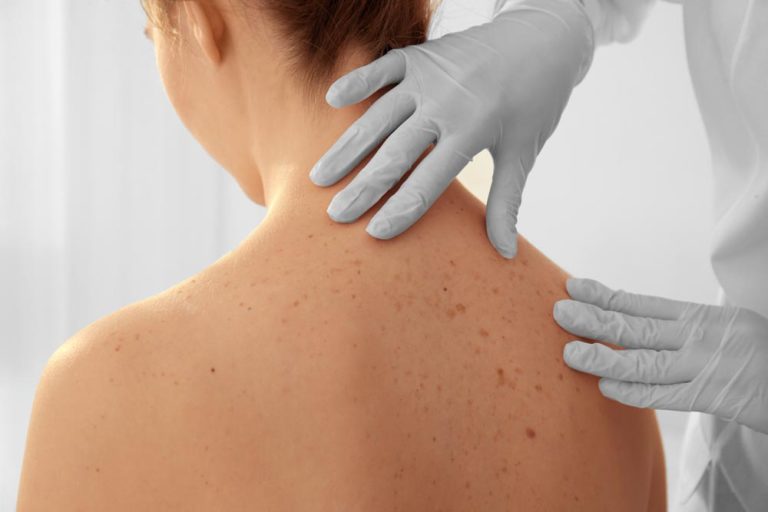Dermatological System
Medical Studies on DHEA – Dermatological System

The skin is our largest organ and precisely the one in which the aging process is most obviously visible. The primary signs of aging are thin skin, deep wrinkles, dry skin and loss of firmness. DHEA supports the regenerative capabilities of the skin – at any age.
Youthful Appearance, Thanks to DHEA
Studies have repeatedly shown that DHEA can have an extremely positive effect on skin aging. For example, it significantly increases the skin’s moisture content, helps to regulate oil and sebum production and positively influences the thickness of the epidermis as well as the skin’s healthy collagen production. Studies involving 60- to 79-year-old women and men have shown that DHEA can also positively affect the skin’s appearance in advanced age. Even age-related skin pigmentation can be somewhat improved with DHEA substitution.
The Role of DHEA in Acne
Acne is one of the most common dermatological conditions and often results in extended suffering for those affected; a situation that can also have psychological consequences. Acne occurs mainly from puberty to young adulthood, but many also suffer from it beyond that time. Although many factors may be responsible, DHEA has been found to play a significant role; in cases of acne, dysregulation of DHEA is often observed. If this situation is adequately corrected, the skin often improves significantly.
Medical Studies on DHEA – Dermatological System
The aging GABAergic system and its nutritional support
2021-04 Mills DJ
Aging is associated with a decline in hormones and an associated decline in GABAergic function and calcium and ion current dysregulation. Neurosteroid hormones act as direct calcium channel blockers, or they can act indirectly on calcium channels through their interaction with GABA receptors.
Management of skin thinning and aging: review of therapies for neocollagenesis; hormones and energy devices
2021-03 Majidian M, Kolli H, Moy RL
Hormone replacement therapy and various devices exist to treat signs of aging, such as skin thinning, yet there are no reviews summarizing or evaluating their role in neocollagenesis and the associated increase in skin thickness.
Hormonal effects on hair follicles
2020-07 Grymowicz M, Rudnicka E, Podfigurna A, Napierala P, Smolarczyk R, Smolarczyk K, Meczekalski B
The hair cycle and hair follicle structure are highly affected by various hormones. Androgens-such as testosterone (T); dihydrotestosterone (DHT); and their prohormones, dehydroepiandrosterone sulfate (DHEAS) and androstendione (A)-are the key factors in terminal hair growth.
Pharmacological activities of dehydroepiandrosterone: a review
2020-01 Sahu P, Gidwani B, Dhongade HJ
Dehydroepiandrosterone (DHEA) is a steroidal hormone secreted by Zonareticularis of the adrenal cortex with a characteristic age related pattern of secretion. These hormones are inactive precursors that are transformed into active sex steroids in peripheral target tissues. These hormones are used for the energy, vitality and the natural support of most bodily functions that involve the endocrine system.
Integrated targeted serum metabolomic profile and its association with gender, age, disease severity, and pattern identification in acne
2020-01 Kim MH, Ha IJ, Kim E, Kim K
Westernized diet and nutritional metabolism are important in acne pathogenesis, especially in adult patients. However, clinical and basic data are lacking. Pattern identification (PI) is a tool that results in a diagnostic conclusion based on a cluster of concurrent symptoms and signs in traditional medicine. Acne can be classified by PI.
Dehydroepiandrosterone treatment in the aging male – what should the urologist know?
2005-11 Saad F, Hoesl CE, Oettel M, Fauteck JD, Römmler A
Dehydroepiandrosterone (DHEA) has attracted considerable attention as a means against the decrements of aging. This review will summarize clinical studies evaluating DHEA as a treatment option for age-related conditions and diseases.
Modulation of collagen metabolism by the topical application of dehydroepiandrosterone to human skin
2005-02 Shin MH, Rhie GE, Park CH, Kim KH, Cho KH, Eun HC
Dehydroepiandrosterone (DHEA) and its sulfate conjugate (DHEA-S) are the most abundantly produced human adrenal steroids to be reduced with age. DHEA may be related to the process of skin aging through the regulation and degradation of extracelluar matrix protein.